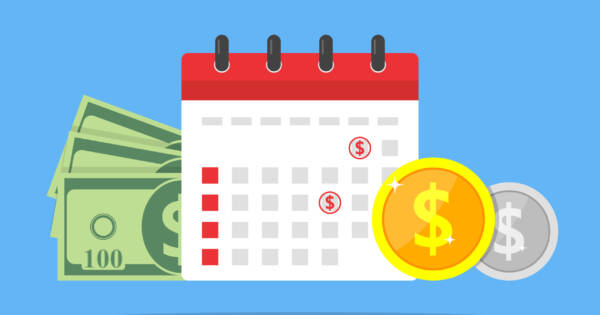We’ve all been there before. You’re telling a friend about how you need a new pair of boots and scrolling through your Instagram feed. Then suddenly, like magic, an ad for some boot company you’ve never heard of appears on your timeline. Later, you’ll wonder how Instagram knew to serve you up the right ad at the right moment. Before that, though, your mind is elsewhere. After all, it’s time to check out these awesome new boots and see how much they cost!
A whopping 82% of Americans use social media. Going even further, 89% of those people buy from a brand they follow. That’s an eye-popping figure. It doesn’t even scratch the surface of all of the impulse buys people make as a result of influencers and targeted advertising.
If you spend more time than you’d like to admit on TikTok, Instagram, Facebook, Twitter or any other social media, there’s a good chance you’re also making more purchases than you’d like to admit. While these products and services may seem like necessities at the time, it’s really social media that’s tricking you into spending more money. Here are some of the ways that social media platforms sneakily get you to open up your wallet — and how to stop yourself before you spend.
Ads Seem To “Know” You
If it seems like Instagram or Facebook knows exactly what you want to buy, it’s because they’ve collected a ton of data about you. That’s their whole monetization strategy, really. While Mark Zuckerberg’s platforms are notorious for vacuuming up personal data, it’s not like any other social sites are safer. Snapchat, TikTok, and Twitter all want to serve you targeted ads too. To ensure you aren’t seeing ads for products you want (but don’t need), take a deep dive into the settings of each of your social media accounts.
For example, Facebook lets you restrict certain data for use by advertisers. It even gives users the option of blocking advertisements from companies they’ve recently seen ads from. It’s tedious but taking the time to have control of your own data can save you from seeing a can’t-resist ad that convinces you to spend money on something you don’t need. Unfortunately, you can’t really get rid of the ads completely. Only make them less personal by locking down as much of your personal data as possible.
Companies Wear You Down
“The rule of seven” is an old advertising concept. It states that a consumer needs to see (or hear) an advertiser’s message at least seven times before taking action and making a purchase. This rule was coined long before the age of social media. In those days, reaching a consumer seven times meant advertising on billboards, television, radio, magazines, or even through the mail. However, many marketers still follow it. That’s why you see the same ads from the same companies on social media over and over.
If you’re feeling worn down by a brand advertising to you (and tempted to make a purchase as a result), get rid of it. Try clicking on the ad’s settings and hiding it, reporting it, or blocking the account altogether. Other ads will take it place, but at least that particular product or brand will be out of sight, out of mind.
You See Your Values In A Company
We’ve already established that social media platforms track your data extensively. That means advertisers know exactly what your values are, along with the causes you care about. This makes it easy for unscrupulous actors to create brands centered on retail buzzwords like “sustainability” and “ethical production.” While it’s good to support brands that share your values, many companies that advertise on social media aren’t exactly what they claim to me.
Before buying from a company “committed to _____,” do a bit more research. Look through their website, Google reviews of their products, or even send an email to their customer support staff to confirm their position. It may seem like a lot of work, but it’s worth it to avoid giving money to a company that is lying about its values just to make a sale.
 Shutterstock
ShutterstockYour “Friends” Ask For Support
Social media is great for keeping in touch with classmates, friends, and family members who live far away. However, having such a wide social circle can sometimes be expensive. It’s natural to want to help friends who post links to crowdfunding campaigns or who have just started their own business. On the other hand, you can’t give your money away to every single person who asks for support.
To avoid making donations or purchases you can’t afford, consider pruning your friends or followers list. Only keep the people you’re close with in real life or speak to frequently. If you don’t want to “lose” someone, many platforms allow you to hide their posts temporarily.
You Like (And Follow) Too Many Brands
Many people like or follow brands on social media without giving it a second thought. However, this actually does a couple things that are likely to make you spend more money. First, it enables social media platforms to get a better idea of the products and companies you like. That means you’ll be served more targeted ads. Secondly, it means companies you already buy from will be able to advertise to you in a new way!
One solution to this problem is to manually “unlike” and unfollow brands. Do you really need to follow Nike or Apple or Ikea or whatever on Instagram? That said, you can also create a second account (or a “finsta” if we’re speaking in Instagram terms). Then only use it to follow friends, companies, and content creators you really care about.
Your Friends Keep Posting About Products
Companies know that referrals are a powerful marketing tool — but your friends might not. An innocent post about a product your friend absolutely loves is actually a powerful advertisement. Up to 71% of consumers say they are likely to make a purchase after seeing a social media referral.
The only way to avoid this pitfall is to simply spend less time on social media overall. Or create a finsta (that’s a combination of “fake” and “insta”) for following specific users, like meme pages.
Influencers Sell Their Lifestyles
One of the best parts about social media is discovering content creators who make you laugh, help you hit your exercise goals, or teach you new things. However, these influencers don’t work for free. Many of them make money by selling (or at least suggesting) products to their followers. Sure, buying a shirt from your favorite YouTuber’s merch store isn’t all that bad. But do you really need that special protein shake being hawked by that fitness model on Instagram? Probably not.
To avoid this social media spending trap, ask yourself this simple question before making a purchase.
“Am I spending money to directly support a creator or just to support a lifestyle?”
If your answer is the latter, then maybe think twice before pulling out your card.
 Shutterstock
ShutterstockIt Can Cost Money To Level Up
Facebook has found a great way to get people to spend more money on social media. For years, developers have published games to the platform. They are free-to-play, but require a little cash to unlock things like extra lives, skins, levels, and other bonuses. Supporting game developers is good, especially when playing a free game. However, it can quickly become costly. Yes, even social media gaming can cost you some of your hard earned dollars with microtransactions.
The obvious answer to this problem is to stop gaming on social media altogether. Get rid of that Candy Crush or Farmville obsession. Another option is to check the App Store on your smartphone for full versions of the game. Yes, these costs money. However, a one-time purchase may actually wind up being cheaper than making several in-app purchases to unlock new levels and features.
Collecting “Experiences” Can Be Costly
“Collect experiences, not things” is basically the millennial mantra. It’s really necessarily a bad one. It’s easier to make memories spending time on trips with friends than it is with a pair of AirPods Pro. However, collecting experiences can become problematic when you start to compare your own vacations and hobbies with everything else in your newsfeed. All of a sudden, merely hanging out on the beach with friends doesn’t seem nearly as fun — not when when your friend’s Instagram Story is filled with photos and videos from a major music festival.
Falling victim to FOMO (fear of missing out) can be incredibly costly. One way to get around it is to remember that if someone’s lifestyle seems too good to be true, it probably is. You have no idea how much credit card debt they may be racking up just to display their globetrotting lifestyle to their followers. Another more actionable step involves hiding their posts entirely. Just go ahead and mute accounts who seem to constantly make you want to replicate their expensive travelling and events.
Social Media Makes You Sad — “Retail Therapy” Makes You Happy
Social media is bad for your health. Its use has been tied to everything from depression and anxiety, to low self-esteem. When we feel bad, it’s only natural that we do things to cheer ourselves up. One of those activities is retail therapy — that is, the quick excitement of buying a new product, watching the tracking, and waiting impatiently for it to arrive. This cycle of logging on, feeling bad, and buying something to feel better can be hard to break. It’s also incredibly detrimental to your wallet.
The good news is that limiting the amount of time you spend on social media can both increase your general health and wellbeing and stop you from spending money on stuff you don’t need to feel better. So try to log off a bit more often, if your social media spending is getting carried away.
It Replicates Your Existing Online Shopping Experience
The majority of people browse social media apps and sites on their smartphones. This is also where the majority of online shopping takes place. The process is streamlined perfectly, with many online retailers accepting payment through Apple Pay or Google Pay. It’s almost too easy to part with your money.
One way to stop yourself from spending too much on social media is to log in using your laptop instead of your smartphone. In addition to altering the online shopping experience, it’s much easier to cross-shop products and look up reviews on a full PC. Do yourself a favor and do your online shopping in a full desktop experience. You’ll probably end up spending less.
It Costs To Stay Connected
It’s not uncommon for people to say they use social media just for keeping tabs on friends and family. Or only for messaging. The thing is, though, a study has found that the more you use social media over time, the more likely you are to shop online. The workaround here is simple: limit your social media consumption. Ideally, into blocks of time in specific parts of the day. Two chunks of 10 minutes may not seem like a lot of time online. However, it’s likely much less time than you spend idly scrolling at work, on the bus, and while waiting for your food to cook.
Another thing thing to consider is switching messaging platforms. Instead of messaging on Instagram and video calling on Facebook, consider texting friends and chatting with them on Google Meet. Those platforms don’t have the same targeted ad systems, which will help reduce your overall time on social media and protect you from overspending.
The Bottom Line
Like anything in life, too much social media can be a bad thing, especially for young people with big financial goals. There are numerous ways social media platforms can trick you into spending more money and there are quite a few things you can do to protect yourself from making purchases you’ll regret later.
In the end, though, nothing is as effective as simply spending less time on social media as less time online means less time to feel FOMO and fewer opportunities to make impulsive purchases. If you absolutely can’t wean yourself off of social media then consider doing a cleanse and taking a deep dive into the brands and influencers you like and follow. A deep clean of your followers and feed can do wonders for your wallet.








